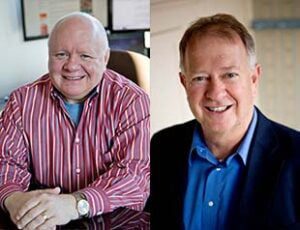The Little Known AE Tax Strategy That’s Worth A Bundle

This post was originally published by PSMJ Resources, Inc.
 Recently, Scott Hursh, CPA, sat down with Tom Moul, CPA, Business Development Director, Strategic Tax Services Group practice, to discuss an advantageous tax strategy that many A/E firms either don’t know about or overlook.
Recently, Scott Hursh, CPA, sat down with Tom Moul, CPA, Business Development Director, Strategic Tax Services Group practice, to discuss an advantageous tax strategy that many A/E firms either don’t know about or overlook.
Tom, from my years of working with A/E firms, I’ve discovered that one of the most overlooked tax benefits is the IC-DISC (Interest Charge-Domestic International Sales Corporation). Why is that?
The primary reason many A/E firms don’t set up these separate tax-exempt corporate entities is that they believe an IC-DISC is just for certain industry groups, such as manufacturers, who export tangible products. The reality is that the IC-DISC also specifically allows firms to provide architectural or engineering services on foreign projects to utilize this strategy.
What do A/E firms need to know about how an IC-DISC works?
If your firm is providing services for a project located or proposed for a location outside of the U.S., revenue from that service can be utilized for IC-DISC savings. By using the IC-DISC vehicle, this new corporation can earn a profit generally equal to the higher of 4% of qualified export gross receipts or 50% of the export taxable income of the firm. These profits are then distributed as dividends to the stockholders of the IC-DISC. Since these dividends are considered “qualified dividends,” the stockholder pays tax on them at the lower federal capital gains rates while the company gets a deduction at the higher ordinary tax rates. This rate differential can add to a significant and permanent tax saving.
Does this separate entity need to be run as its own company?
No, the beauty of the IC-DISC is that it is not required to maintain an office, hire employees, etc. In essence, the corporation is a shell, but rest assured, it is a legal one that is worth the effort.
Could you provide some examples of architecture and engineering activities that would qualify?
Sure, qualified services include consultation, planning, design, drawings and specifications, feasibility studies, and supervision. It’s important to note that these services don’t have to be physically conducted outside of the U.S. As long as the end result is a project in a foreign country, your work can all be done from the comfort of your U.S.-based office.
Is this tax benefit only applicable to larger firms?
No – any firm, regardless of size, can and should take advantage of an IC-DISC. While there are revenue minimums, firm size alone will not impact your ability to utilize this opportunity.
Is it too late at this point in the year to set up an IC-DISC?
Not at all; they can be set up at any time during the year. However, an IC-DISC is not retroactive, so you will only start to receive benefits after it is established. The key to maximizing the benefit is to set it up as soon as you know you will be working internationally.
What should a firm do first to determine if they qualify for an IC-DISC?
We recognize that the mechanics of an IC-DISC are complex and often confusing to navigate. While we aren’t able to go too deep into the details here, we’ve prepared an IC-DISC video that explains the ins and outs of this benefit and how it can deliver significant savings. At the end of the video is a link to a survey designed to assist in determining if your firm qualifies. The process from beginning to end can take time, so it is critical to do your research and reach out to a professional if necessary to assist.



